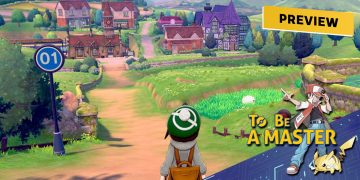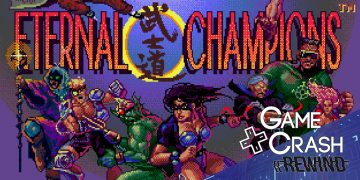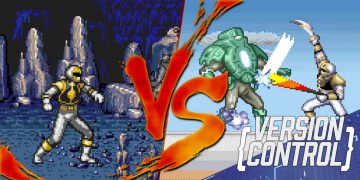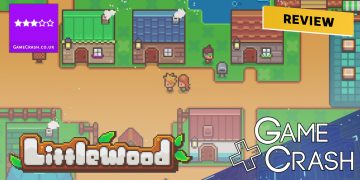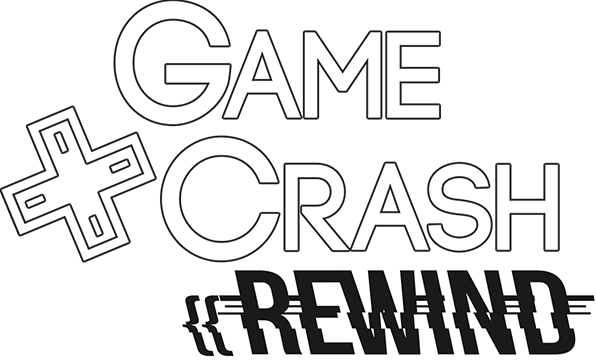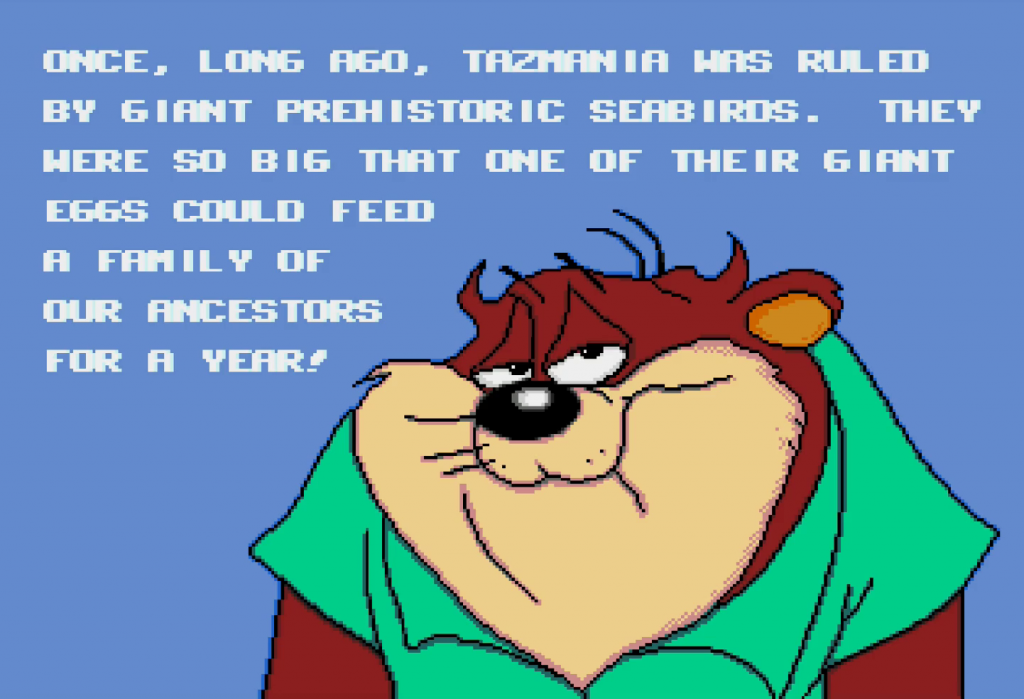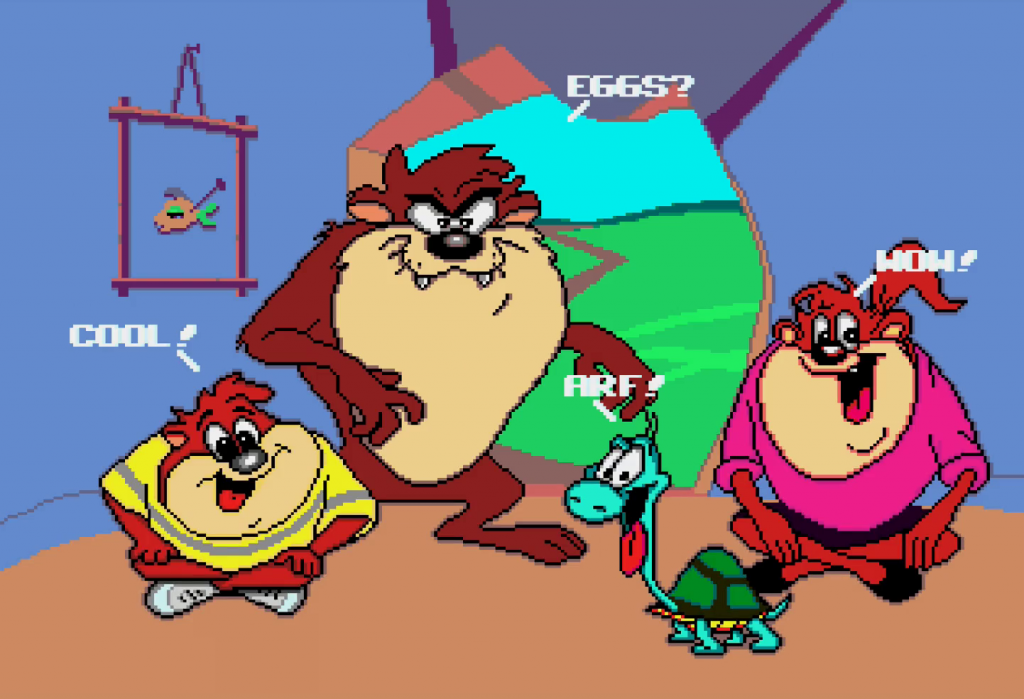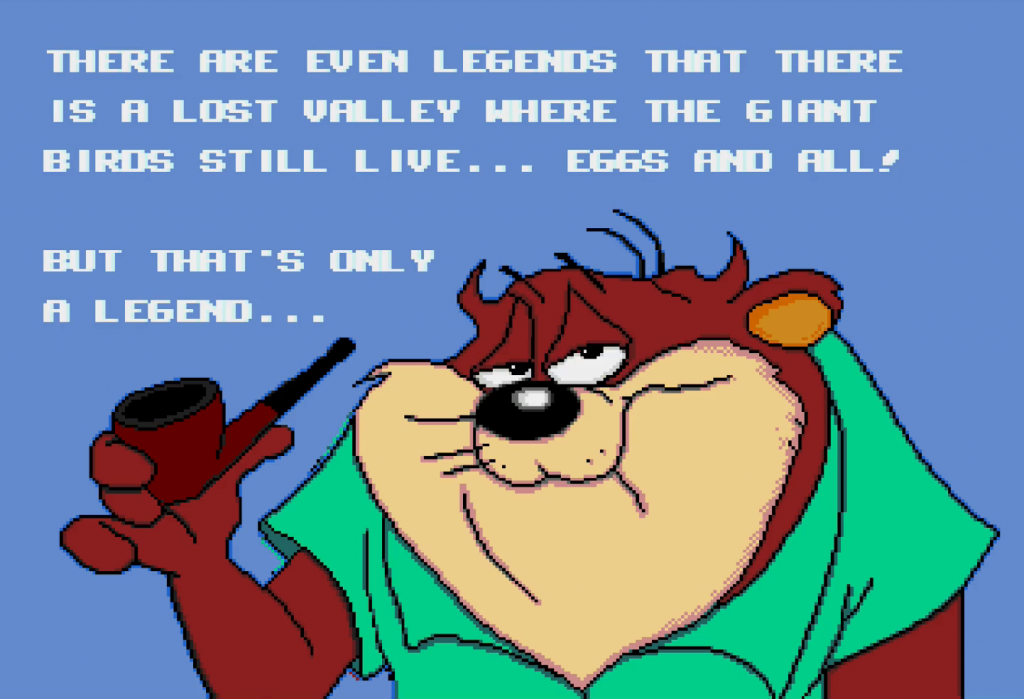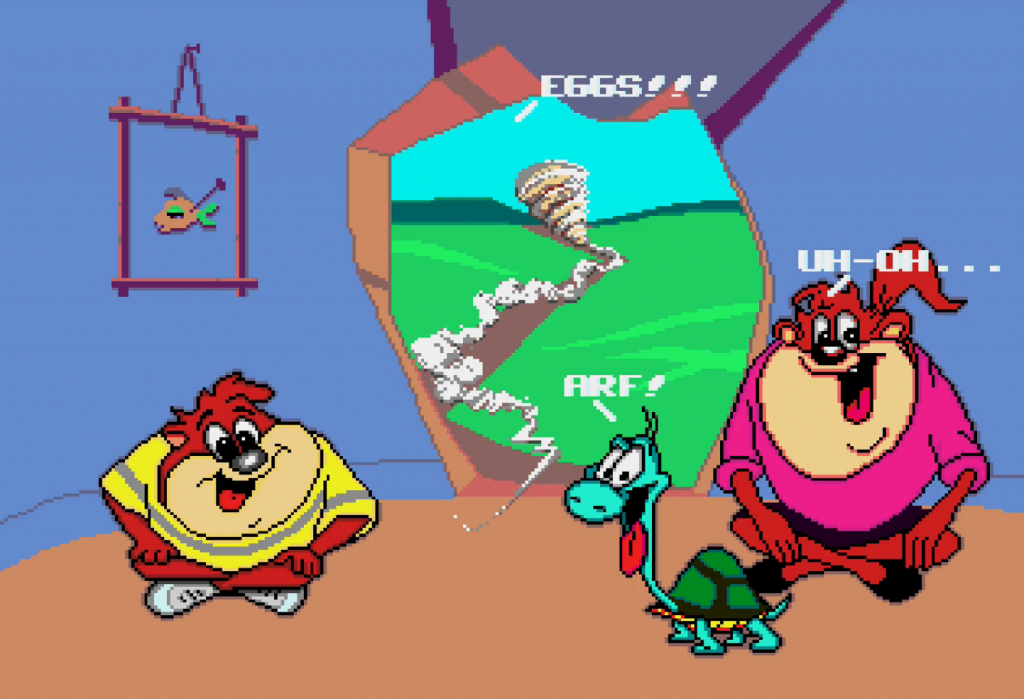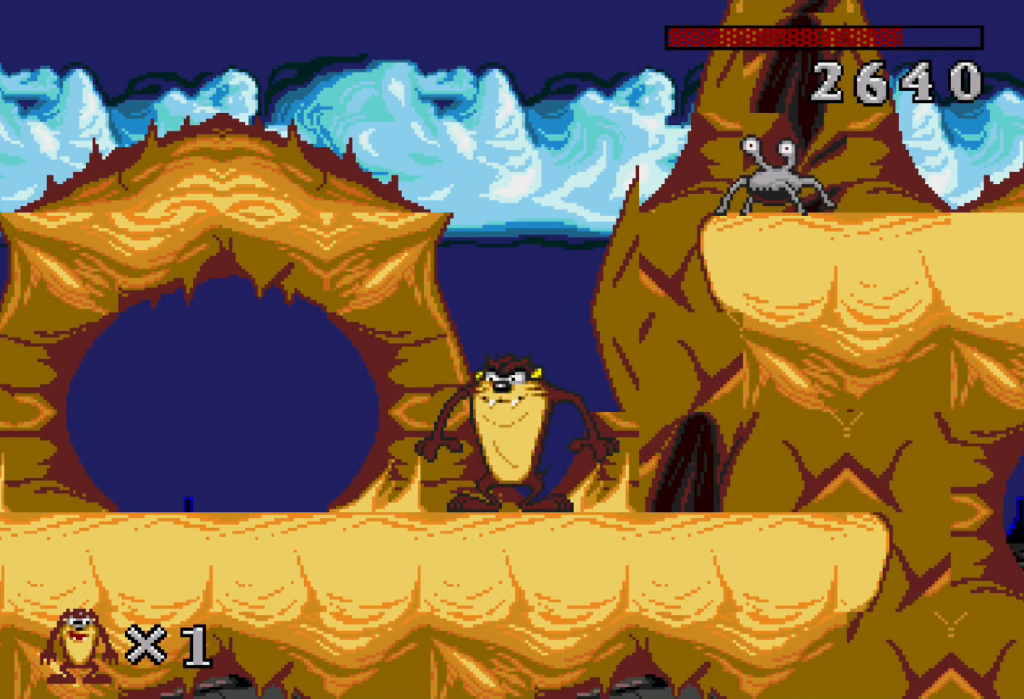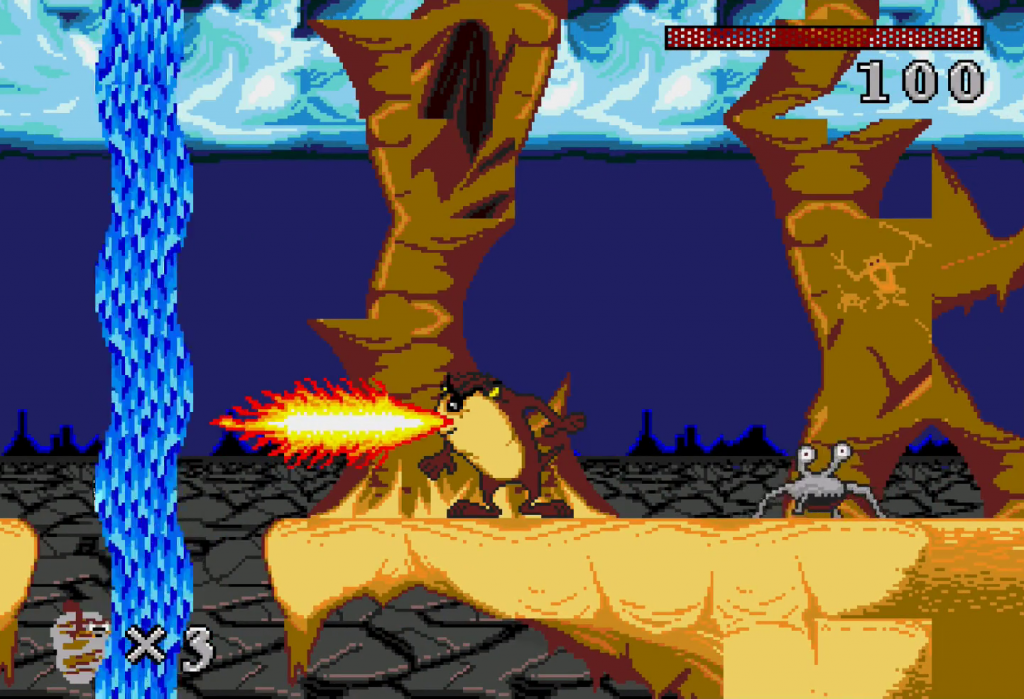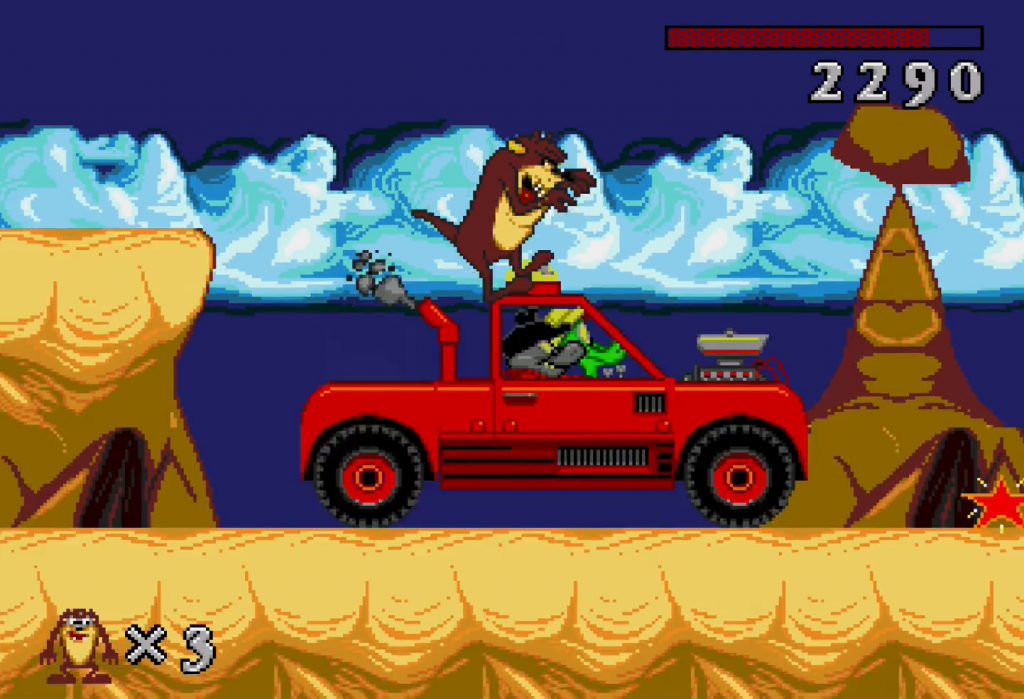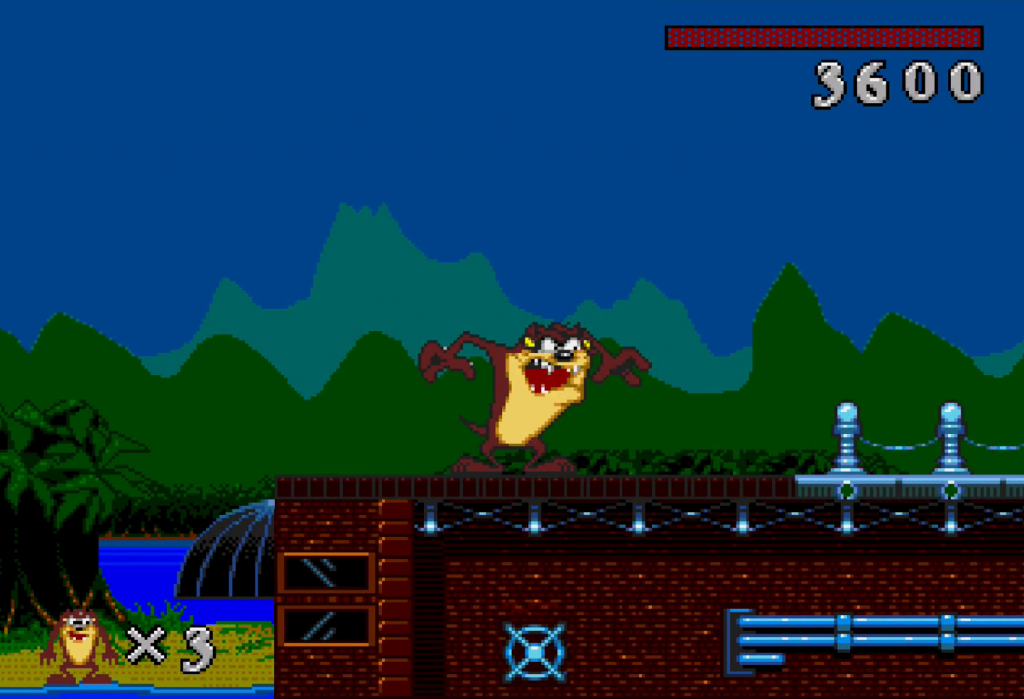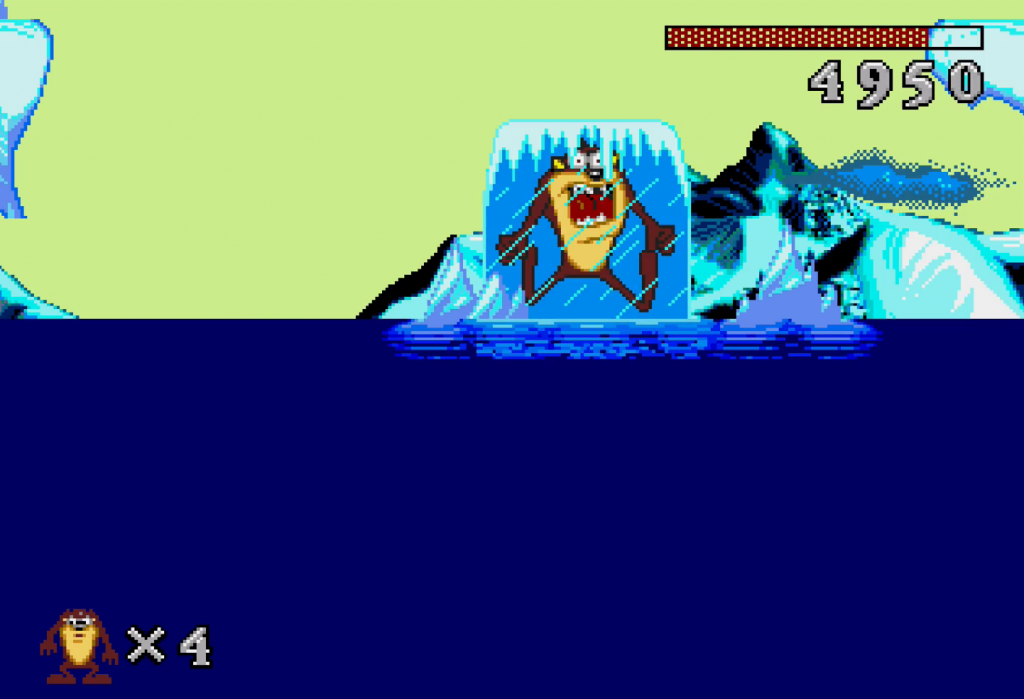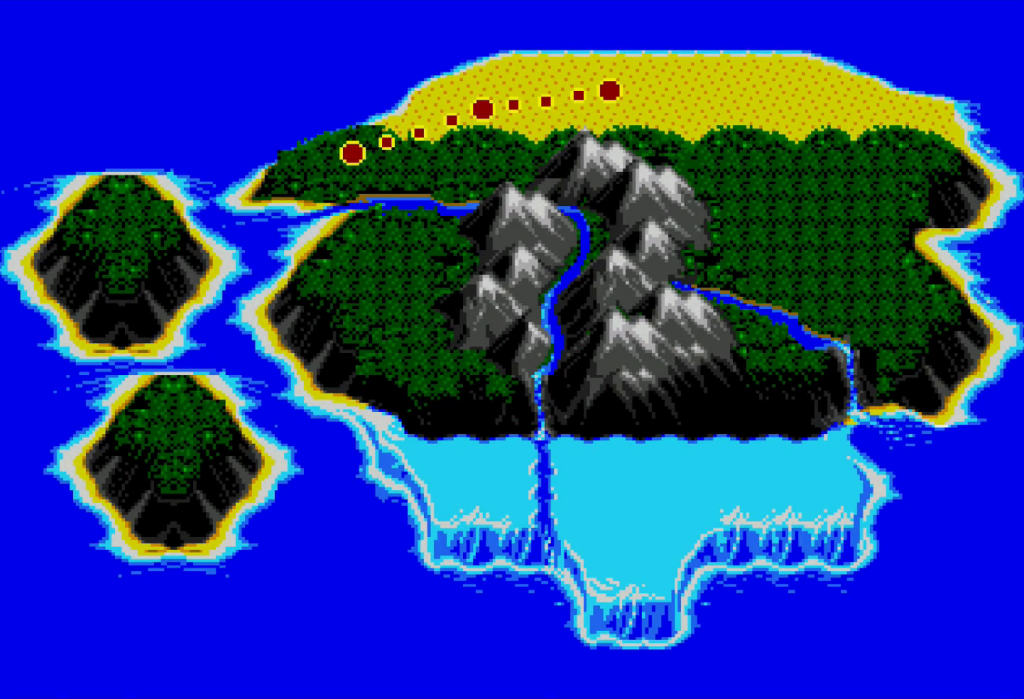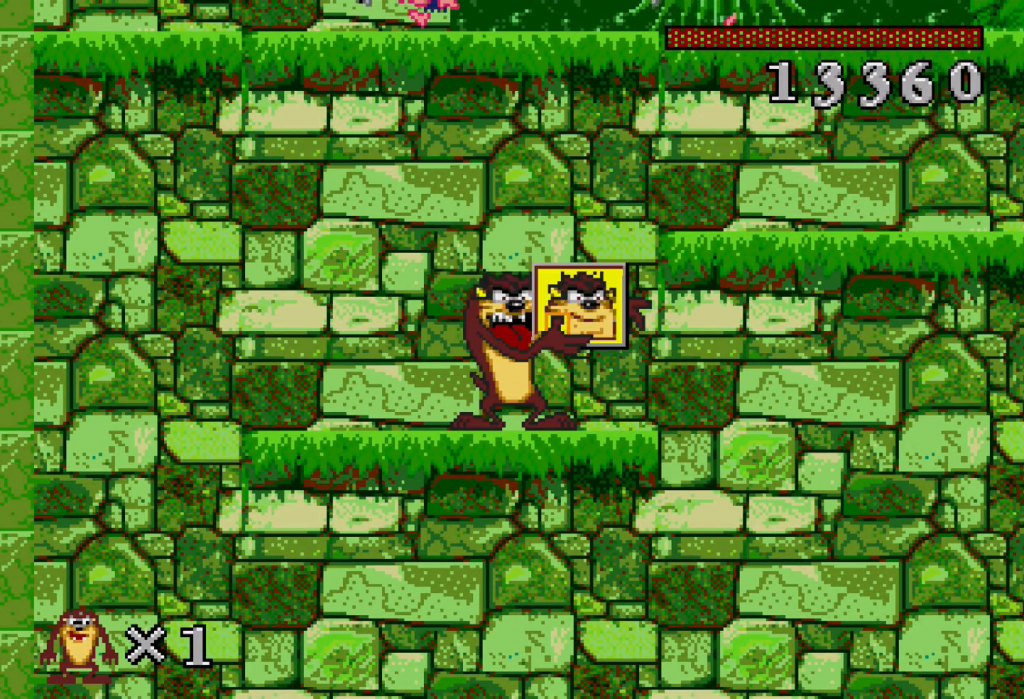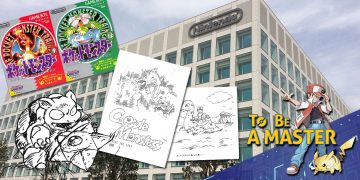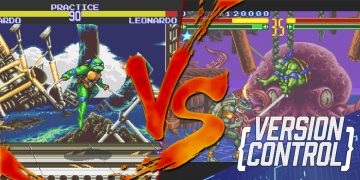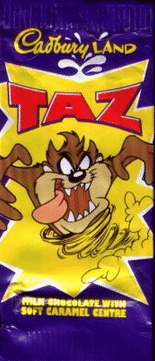
“Welcome to the land that’s way under, down under. The sky’s always yellow in rain or shine, down in Taz-Mania. “
If you were a 90s kid, those lyrics – even if you got them wrong, as most people apparently did – would absolutely be burned into your brain. Right alongside the bright landscapes, an incongruous suburban life set against a wild Tazmanian backdrop and – of course – not to leave him out of this intro either, Taz himself.
The Tazmanian Devil has been starring in Looney Tunes cartoons since the 50s, but there’s no question that the 90s were Taz’s decade. He had his own cartoon, he had a starring role in Space Jam, he even had his own chocolate bar. Most importantly of all, obviously, were Taz’s starring roles in his own video games.
Being a 90s kid myself, I happily wolfed down my fair share of Taz bars along with the rest of the Devil’s considerable output. The cartoon was a classic addition to the golden age of Warner Bros. cartoons from the same period. Sadly, the same can’t really be said of his adventures in gaming. Even the game that I lost countless hours of my own life to: Taz-Mania on the SEGA Mega Drive.
What is it?
The Mega Drive Taz game draws heavily from the cartoon by featuring Taz’s family in the ‘story’ intro, while the side characters and ‘villains’ appear as enemies and bosses. That’s pretty much the limit of the connection to the cartoon though. There’s a hint of the intro song but that’s about it.
The game’s story – such as it is – sees Taz’s dad explaining that “long ago” the land of Tazmania was ruled by giant prehistoric birds. These birds laid eggs so large that they could “feed a family of our ancestors for a year”, which is all the invitation Taz needs to race off in search of a dinner worthy of satiating his massive appetite.
Taz’s adventure through Tazmania takes him from desert areas to ACME factories and from jungle areas to frozen wastelands. For the most part, it’s standard 90s platformer stuff.
As well as being able to jump on enemies, Taz can also perform his trademark spin attack. There are no limits on this – you absolutely can spin from one end of the level to the other so long as there’s ground below your feet – but it comes with a few significant caveats. The first is that although most enemies can be effortlessly blasted away using it, so can all items and power-ups.
Inadvertently spinning a 1-up away isn’t the only frustrating act of self-destruction the game invites you to stumble into, either. When Taz lands on any item – or even some enemies – he’ll happily shovel it into his mouth. Some items will give Taz health or – in the case of some hot chilli peppers – will give him an additional fire breath attack, but he’ll also try to feast on any bombs lying around the level too. Even Taz’s considerable constitution can’t withstand too much of this and he’ll lose more than half his health, making it quite likely a fatal mistake.
Most of the platforming is pretty basic, made most difficult by the stiff controls. The enemies don’t really get much more interesting than their design – the majority will simply walk around and damage Taz on impact – and the bosses are infrequent and uninteresting to fight.
The sound design in the game is at once novel and bizarrely awful. Perhaps in an effort to take from the ‘Merrie Melodies’ heritage of the Looney Tunes cartoons, all of Taz’s movements are punctuated by a range of melodious(ish) sounds rather than straight up sound effects. The level background music is all quite simple and muted, seemingly to try and make your actions throughout the level the true soundtrack.
Unfortunately, the majority of noises your Mega Drive makes while this game operates within it are pretty horrible. This sort of dynamic soundtrack would be a feat to pull off in modern games today and was a total failure here within the limits of the hardware.
The most interesting sound you’ll hear in the game is the ever-increasing pitch of Taz’s spin as you let it build. This eventually peaks out at a shrill screech but if you’re anything like 10 year old me, it’ll probably entertain you well enough. I might just have been a bit simple, though.
In replaying it for the sake of this article, I very quickly remembered the real reason I ended up spending so much time with this game as a child. The absolutely hateful minecart section – a level archetype that seemed mandatory for all platform games at the time – defeated me now just as it did so many times back then.
If you’re aware of the NES Battletoads‘ jet bike section you’ll have a fairly decent idea of the horror that awaits you at this point in Taz-Mania. This section sees Taz having to pilot a minecart along a broken piece of track, extending its scissor-lift style wheels to clear obstacles on the ground, while retracting it so as to not brain him against low ceilings.
Best of all, the button for this action isn’t the jump button – it’s the one button that does almost nothing in the rest of the game. This effectively guarantees at least one painful smash into an upcoming barrier as you fumble to work out what to do.
The speed of the cart in this section means you’ll never be able to react to these obstacles as they come without superhuman reflexes. The only option will be to memorise the layout and hope you can clear it before you run out of lives and continues.
I remember managing this at least once as a child with little else to play and a seemingly endless supply of free time but it’s become my hard stopping point several decades on.
Should you play it?
While I’ve been less than glowing about the game, I did, to be fair, play it – and at points enjoyed it – a lot back in the day. I was a big fan of Taz himself and there’s no question that the game features plenty of mechanics that are pretty unique to it.
Unfortunately, those mechanics aren’t really as interesting in 2019 as they were in the early 90s. While the idea of a platformer allowing you to accidentally destroy your own power-ups is still pretty novel, it’s also not exactly a selling point. It’s actually just quite annoying.
The game’s visuals are largely just adequate, but I suspect that parts of the game, such as the jungle level, benefited enormously from the distortion and general softness that old CRT TVs would give to games of the time. On today’s screens, even dodgy pixel filters on emulators can’t save it from looking more like a confusing green mess.
So, generally, no. There isn’t really a lot here worth going back to. If you’ve never played the game before, you’re not really missing out in continuing your ignorance of it. If, like me, you actually played it quite a bit – the most you’ll get out of it is going to be remembering just how anger-inducing that damned minecart level was. Only this time your brother probably won’t be nearby or small enough to provide the catharsis of a good fight with to get over it.
Can you play it?
If you’re determined to give Taz-Mania a shot, though, your choices to do so today are relatively limited. As a licensed title, it’s been entirely skipped over for Virtual Console releases and the like.
But decent, boxed versions of the game are available on eBay for about £13. You’ll just need an actual Mega Drive to play them on.
The old AR Games ‘MegaDrive Blaze’ – a common staple in Gadget shops across the UK – actually can play Mega Drive carts, as well as the assortment of in-built games. The emulation on these aren’t great, but it’s certainly an affordable and hassle-free way to play actual carts on your TV today.
The best possible way to play actual Mega Drive games on your modern TV though is the Analogue Mega SG. Rather than emulating a Mega Drive, The Mega SG effectively is one. It plays the game running off an actual hardware chipset designed to match the original as closely as possible – with with modern outputs and mod-cons. It’s nearly £200 and doesn’t come with any games, but if you’re serious enough about building a physical Mega Drive game library that you’re considering including Taz-Mania in it… Well, Taz-Mania is unquestionably the worse investment there…







